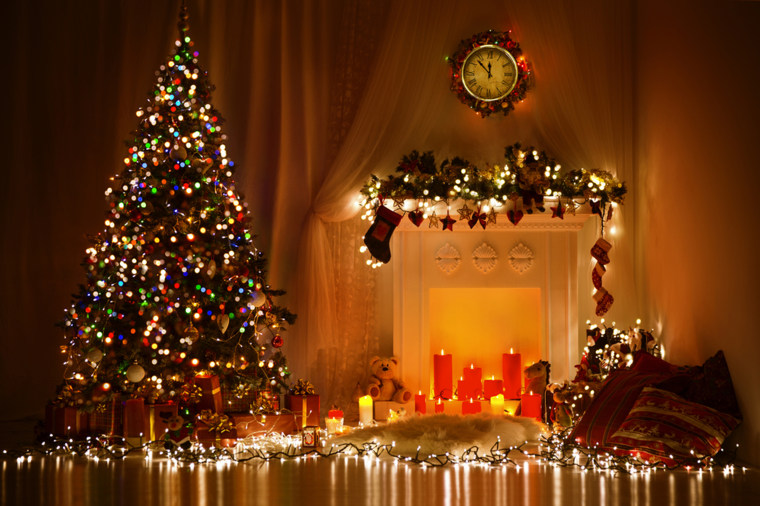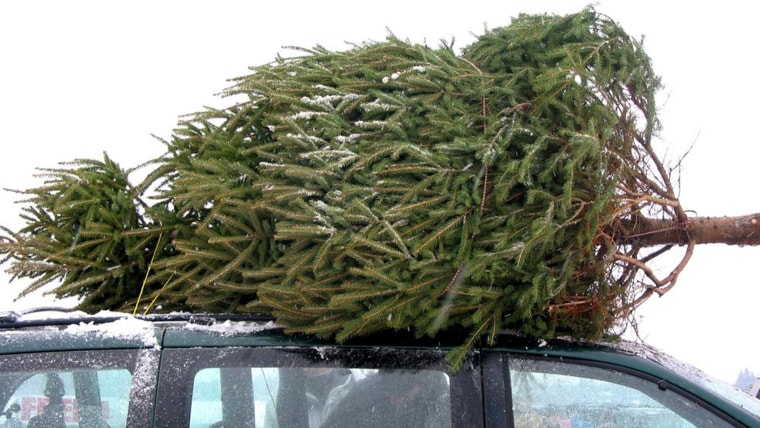Celebrity landscaper Ahmed Hassan joined TODAY to answer some of our most important questions about the centerpiece of Christmas: the tree. Consider this your guide to buying the perfect tree and keeping it fresh all season long.
RELATED: 5 tips to keep your Christmas tree alive through the holidays
1. Is one variety of Christmas tree "sturdier" than others?
A Noble fir. In the wild, Noble fir trees are tall — we're talking over 200 feet — and beautifully symmetrical. The needles are over 1 inch long and are bluish-green, but they bear a silver appearance because of two white rows of stomata on the underside and one to two rows on the upper surface. The Noble fir has long been considered an excellent Christmas tree because of its beauty, stiff branches and long "keepability" (yes, that's the word when it comes to most Christmas trees).
2. We all love that "new Christmas tree" smell. Which variety offers as much for the nose as for the eyes?
The Fraser fir! It has a somewhat restricted range as far as where it grows — elevations about 4,500 feet in the Southern Appalachian Mountains from southwest Virginia, through western North Carolina and just into eastern Tennessee. Many folks throughout these regions consider the Fraser fir one of the nicest Christmas trees available. It's dark green with silvery underneath needles that range from 1/2 to 1 inch long and are slightly angled upward — great for holding ornaments. And this species also has what's considered good needle retention and a beautiful scent.

RELATED: Why my fake Christmas tree is better than your real one
3. What about the Douglas fir?
Another great choice! Out West where this species is grown, the Douglas fir is commonly used as dimensional lumber that you'd buy at your local home improvement store. It's a very reasonably priced holiday tree and creates that great smell of Christmas indoors. The Douglas fir has been the major Christmas tree species in the Pacific Northwest since the 1920s. Most all of the trees up until 1973 (around the time I was born) were harvested from forest lands. Today, these trees are grown at Christmas tree farms.
4. No matter what kind of tree we buy, how can we make sure it stays looking fresh and healthy all season long?
To have it last all month long, you'll want to do the same thing: give your stem or trunk a fresh cut right before putting it into water and your Christmas tree stand. Or you can have the folks at the nursery make the fresh cut, and then wrap that fresh cut in a damp cloth, and wrap that in plastic to keep it fresh until you can get it in a stand with water at home.
5. Are "living trees" a practical option?
Absolutely! Potted Christmas trees in containers that can be placed in the home and watered like a houseplant, and then transplanted out in your landscaping, are a fantastic and truly "green" choice of tree. Living trees come in all kinds of sizes, including small (to use as a tabletop variety), medium (as a secondary tree for a smaller room in your house or for an apartment) and large (the closest to a normal, full-size tree). While you'll likely pay a bit more for these, once Christmas Day is over, you'll have a tree to add to your landscape.

RELATED: Don't fake it: Getting a real Christmas tree is the only way to go
6. With any real tree, safety is a real concern. How can we make sure we're staying safe?
Remember to keep your tree moist and protect your floors with a water-proof saucer or the like, and always spray your tree with fire retardant. You can't be too careful when it comes to keeping your loved ones safe and sound!
This article was originally published Dec. 2, 2014 on TODAY.com.